Qatar crisis will Trump sell out democracy in the old realist style?
Some people have pointed out that the Kingdom of Saudi Arabia (KSA) is central to the cultural and political ‘swamp’ that delivers terrorists to Macron led France and the rest of us westerners. Is the KSA still run by Assad type mass murdering tyrants in the making? It is true they are the born to rule rats that own the KSA but no doubt they occasionally worry about when their Saudi Nasser will emerge and dispose of them. After all they know there used to be a Shah in Iran and a King in Iraq and Egypt. They keep their military strong but perhaps not too strong. They are similar to the Syrian and the military thugs of Egypt in their hatred of democracy and a free press. They have fallen out over Syria because of the sectarian divide. But they have always done business in the past. With Egyptian support they are making war in Yemen and bringing on a mass murder from starvation there as a result.
Not much has been said at Strangetimes about this war but it has reached catastrophe levels lately and is regularly in the MSM. Clearly it’s part of the sectarian region wide war and the great Islamic divide. There is no analysis that I am aware of -nothing any left can be proud of- that people have brought to my attention over these last few years. NADA. I, having kept focused mostly on Syria, know little about it. But I wonder if Yemen is now going to drag in the West.
The rulers of the KSA regularly kill their political opponents and are none to keen on a western style free press. Half their own country is in effect enemy territory with a sullen oppressed Shia population that this leadership in Wahhabi style hate. Brutal in that Wahhabi tradition, as Ayaan Hirsi Ali points out they are very much Daesh style in killing those in their way, right down to the public head lopping.
These born to rule rats, started demanding that democracy in Qatar be wound back in the manner that the Egyptians have and that the Turks have resisted! Together with the UAE born to rule and their propped up Sunni rulers of Shia in Bahrain they sprung a crisis on the US over Qatar. Trump may have wanted to go the way of the old realists that he so admires but the Turks under Erdogan stepped in as the regional leaders of the democratic changes and said NO.
Consider the list of actionable demands that the US forced the KSA led anti democrats to deliver. The 13 demands in full.
1 Curb diplomatic ties with Iran and close its diplomatic missions there. Expel members of Iran’s Revolutionary Guards and cut off any joint military cooperation with Iran. Only trade and commerce with Iran that complies with US and international sanctions will be permitted.
2 Sever all ties to “terrorist organisations”, specifically the Muslim Brotherhood, Islamic State, al-Qaida and Lebanon’s Hezbollah. Formally declare those entities as terrorist groups.
3 Shut down al-Jazeera and its affiliate stations.
4 Shut down news outlets that Qatar funds, directly and indirectly, including Arabi21, Rassd, Al-Araby Al-Jadeed and Middle East Eye.
5 Immediately terminate the Turkish military presence in Qatar and end any joint military cooperation with Turkey inside Qatar.
6 Stop all means of funding for individuals, groups or organisations that have been designated as terrorists by Saudi Arabia, the UAE, Egypt, Bahrain, the US and other countries.
7 Hand over “terrorist figures” and wanted individuals from Saudi Arabia, the UAE, Egypt and Bahrain to their countries of origin. Freeze their assets, and provide any desired information about their residency, movements and finances.
8 End interference in sovereign countries’ internal affairs. Stop granting citizenship to wanted nationals from Saudi Arabia, the UAE, Egypt and Bahrain. Revoke Qatari citizenship for existing nationals where such citizenship violates those countries’ laws.
9 Stop all contacts with the political opposition in Saudi Arabia, the UAE, Egypt and Bahrain. Hand over all files detailing Qatar’s prior contacts with and support for those opposition groups.
10 Pay reparations and compensation for loss of life and other, financial losses caused by Qatar’s policies in recent years. The sum will be determined in coordination with Qatar.
11 Consent to monthly audits for the first year after agreeing to the demands, then once per quarter during the second year. For the following 10 years, Qatar would be monitored annually for compliance.
12 Align itself with the other Gulf and Arab countries militarily, politically, socially and economically, as well as on economic matters, in line with an agreement reached with Saudi Arabia in 2014.
13 Agree to all the demands within 10 days of it being submitted to Qatar, or the list becomes invalid.
So the military coup leaders from Egypt and the born to rule reactionaries of the KSA are demanding that the Muslim Brotherhood types be sold out. Well most of this is what Trump would either want or think ‘he’ could live with; but this is not good for the big picture of draining any regional swamp and that much is clear. The Turks stepped in.
The peoples of the gulf are all no doubt siding with Qatar because they are mostly Shia people that hate their KSA overlords like in Bahrain where the US led by Obama let the Arab spring be crushed by the KSA army rolling in and keeping the people in their place.
Importantly both Turkey and Iran are going to back Qatar so the ‘parting of the ways’ is next.
The people of Kuwait are going to side with the country of Qatar but I wonder what the rulers of Kuwait will do in the longer run?
The Shia led government of Iraq is going to back Qatar -if Qatar at least does more over Al Qaeda and other Sunni terrorists and that will be required by everyone so they will IMV make a big show of stepping up over this issue.
Democracy is the solution and that now requires Muslim Brotherhood type Islamist governments like Turkey and what was previously won or almost won in Egypt.
The new leader of the KSA is quite obviously ‘modernising’ and at a rapid rate but he has a big job ahead. What ever he does the swamp is not going to remain static and the blatant oppression of the Shia peoples is central. BUT the big fly in all this is still Syria where the HIRISE dominated by the ‘Shia’ are the big problem led and protected from the West by Russia.
The West has now clearly had a gut full of Russia so more complex revolution is on the way.
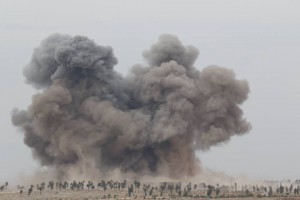
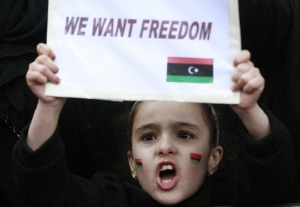
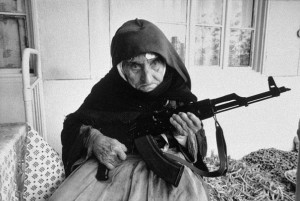
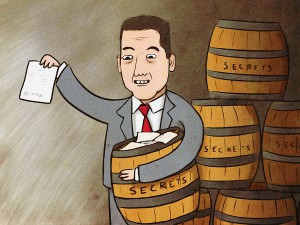
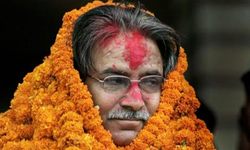

Recent Comments